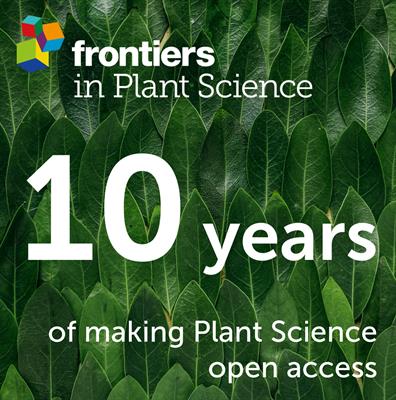中国水稻种植系统氮磷钾施肥量阈值估算
IF 4.1
2区 生物学
Q1 PLANT SCIENCES
引用次数: 0
摘要
施肥量的确定直接影响产量目标、土壤肥力和环境风险,因此在农艺实践中起着举足轻重的作用。在本研究中,我们提出了一种方法,利用部分养分平衡和产量的允许范围来估算中国水稻(Oryza sativa L.)田的氮(N)、磷(P)和钾(K)肥施用阈值。基于 6792 个稻田观测数据集,我们确定了单季(单季稻)、中稻(夏粮与冬粮轮作)、早稻和晚稻(双季稻种植制度)的氮、磷、钾最低和最高施肥量,分别为每季每公顷 114-146 和 220-292 千克 N,每季每公顷 56-74 和 112-149 千克 P2O5,以及每季每公顷 170-230 和 329-347 千克 K2O。这些数值作为施肥的下限和上限,指导着产量目标和环境保护。此外,如果稻草还田,理论上钾肥需求量可减少 183 千克 K2O/公顷-1,相应的氮肥需求量可分别减少 50 千克 N 和 26 千克 P2O5/公顷-1。推荐的施肥方法将秸秆养分还田排除在施肥上限之外,建议平均施肥量为每公顷 194 千克 N、每公顷 105 千克 P2O5 和每公顷 157 千克 K2O,这非常符合水稻的养分需求。此外,用有机氮替代化肥氮是节约化肥氮的有效方法,有可能将化肥氮用量减少 20%-40%。利用缓释氮也是提高氮利用效率和优化氮平衡的有利选择。这项研究为制定施肥限制指标提供了有价值的见解,旨在通过采用平衡施肥率和利用有机残留物,实现环境影响与农业生产力之间的微妙平衡。本文章由计算机程序翻译,如有差异,请以英文原文为准。
Estimating thresholds of nitrogen, phosphorus and potassium fertilizer rates for rice cropping systems in China
Determining the fertilization rate plays a pivotal role in agronomic practices as they directly impact yield targets, soil fertility, and environmental risks. In this study, we proposed a method that utilizes allowed ranges of partial nutrient balance and yield to estimate the threshold of nitrogen (N), phosphorus (P), and potassium (K) fertilizer applied to rice (Oryza sativa L.) fields in China. Based on a dataset of 6792 observations from rice fields, we determined the minimum and maximum rates of N, P and K suggested for single (mono-season rice), middle (summer-season rice rotated with winter-season upland crop), early and late (double-season rice cropping system) rice, ranging between 114−146 and 220−292 kg N ha−1 per season, 56−74 and 112−149 kg P2 O5 ha−1 per season, and 170−230 and 329−347 kg K2 O ha−1 per season, respectively. These values serve as the lower and upper fertilization thresholds, guiding yield goals and environmental protection. Furthermore, if rice straw is returned to fields, the demand for K fertilizer can theoretically decrease by 183 kg K2 O ha−1 , with corresponding decreases of 50 kg N ha−1 and 26 kg P2 O5 ha−1 , respectively. A recommended fertilization approach, excluding returned straw nutrients from the upper fertilization thresholds, suggested average application rates of 194 kg N ha−1 , 105 kg P2 O5 ha−1 , and 157 kg K2 O ha−1 , which align well with the nutrient requirements of rice. Additionally, substituting organic N for chemical N is an effective approach to conserve chemical fertilizer N, potentially reducing chemical N usage by 20%−40%. Utilizing slow-release N is also a favorable option to enhance N use efficiency and optimize N balance. This study offers valuable insights into the development of fertilization restriction indicators, aiming to achieve a delicate balance between environmental impact and agricultural productivity through the adoption of balanced fertilization rates and utilization of organic residues.
求助全文
通过发布文献求助,成功后即可免费获取论文全文。
去求助
来源期刊

Frontiers in Plant Science
PLANT SCIENCES-
CiteScore
7.30
自引率
14.30%
发文量
4844
审稿时长
14 weeks
期刊介绍:
In an ever changing world, plant science is of the utmost importance for securing the future well-being of humankind. Plants provide oxygen, food, feed, fibers, and building materials. In addition, they are a diverse source of industrial and pharmaceutical chemicals. Plants are centrally important to the health of ecosystems, and their understanding is critical for learning how to manage and maintain a sustainable biosphere. Plant science is extremely interdisciplinary, reaching from agricultural science to paleobotany, and molecular physiology to ecology. It uses the latest developments in computer science, optics, molecular biology and genomics to address challenges in model systems, agricultural crops, and ecosystems. Plant science research inquires into the form, function, development, diversity, reproduction, evolution and uses of both higher and lower plants and their interactions with other organisms throughout the biosphere. Frontiers in Plant Science welcomes outstanding contributions in any field of plant science from basic to applied research, from organismal to molecular studies, from single plant analysis to studies of populations and whole ecosystems, and from molecular to biophysical to computational approaches.
Frontiers in Plant Science publishes articles on the most outstanding discoveries across a wide research spectrum of Plant Science. The mission of Frontiers in Plant Science is to bring all relevant Plant Science areas together on a single platform.
 求助内容:
求助内容: 应助结果提醒方式:
应助结果提醒方式:


